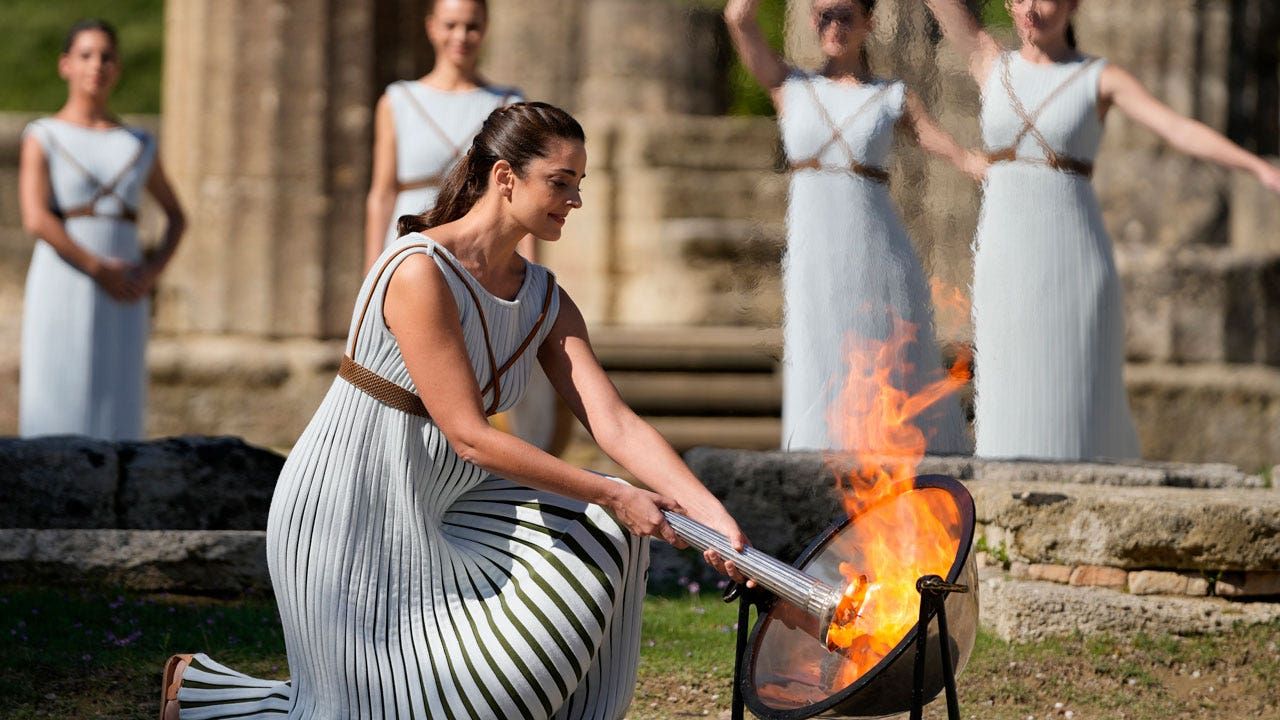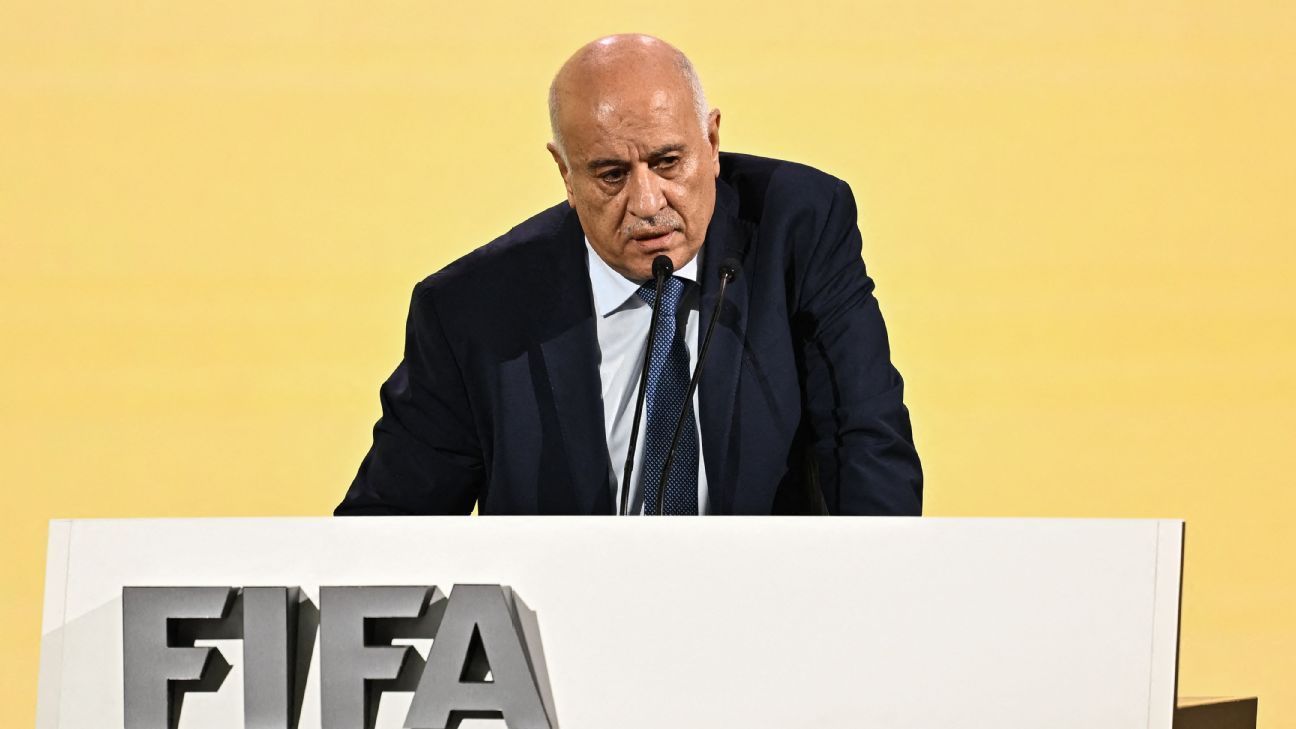A priestess prays to a dead sun god in front of a fallen Greek temple. If the sky is clear, a flame emerges that will burn in Paris throughout the most important sporting event in the world. The speeches continue.
On Tuesday, the flame for this summer's Paris Olympics was lit at the birthplace of the ancient Olympic Games in southern Greece in a meticulously choreographed ceremony.
It will then traverse Greece for more than 3,100 miles before being handed over to French organizers at the Athens venue used for the first modern Olympic Games in 1896.
PARIS PREPARES FOR THE COUNTDOWN OF 100 DAYS TO THE OLYMPIC GAMES, WITH THE AIM OF REVIVING THE PASSION FOR THE GAMES
Here's a look at the workings and meaning of the elaborate ceremony that takes place among the ruins of ancient Olympia before each modern Olympics.
COULDN'T THE FRENCH LIGHT IT UP IN PARIS?
Couldn't the Academy Awards be announced simply on a conference call?
The spectacle at Olympia has been an essential part of every Olympic Games for almost 90 years since the Berlin Games. Its goal is to provide an inescapable link between the modern event and the ancient Greek original on which it was initially modeled.
Greek actress Xanthi Georgiou, playing the role of the High Priestess, lights the torch during the lighting of the Olympic flame at Ancient Olympia, the birthplace of the ancient Olympic Games, in southwestern Greece, October 18, 2021 On April 16, 2024, the flame of this summer's Paris Olympics was lit and carried through Greece for more than 3,100 miles before being handed over to French organizers in Athens, site of the first Olympic Games. modern. (AP Photo/Thanassis Stavrakis, File)
Once it has been transported by any means imaginable to the host city (it has been transmitted by satellite, dragged to Mount Everest and towed underwater), the flame lights a cauldron that burns in the host Olympic stadium until the end of the games. It is then used for the Paralympic Games.
So how do you light it?
An actor playing an ancient Greek priestess holds a silver torch containing highly combustible materials over a concave mirror. The sun's rays bounce off every inch of the burnished metal half-sphere and gather in an extremely hot spot that ignites the torch.
This takes place within the archaeological site of Olympia, before the ancient temple of Hera, wife of Zeus, king of the Greek gods, whose own ruined temple lies nearby.
The flame is eventually used to light the first runner's torch (champagne this year for France) and a long relay across Greece leads to the handover on April 26 at the Panathenaic stadium in Athens.
DOES IT NEED TO BE SO COMPLICATED?
The flames and sandals create an impressive spectacle, and although the priestess's largely ironic prayer to Apollo might not be answered, the parabolic mirror works well.
The idea was the result of Greek-German cooperation before the 1936 Olympic Games in Nazi Germany, which were filled with fanfare and swastikas. It was based on a mechanism mentioned by ancient writers in a non-Olympic context and served the desire to combine the games of antiquity with the modern renaissance.
The innovations of 1936 included a torch relay to Berlin and have been continued, with modifications, ever since. An initial idea of relaying the flame in hollow plant stems, a nod to the Greek myth of Prometheus who stole fire from the gods, was discarded as impractical.
DID THIS HAPPEN IN OLD GAMES?
No. But modern athletes do not compete naked nor, when victorious, are they awarded olive wreaths and the right to a marble statue in their name and, in the case of three-time winners, to their royal likeness.
Furthermore, there is no brief cessation of war to allow the modern games to go ahead, women not only attend but compete, and wealthy patrons (or heads of state) do not reap the glory of their teams' victories. cars.
According to ancient Greek tradition, the ancient games, held every four years in honor of Zeus, began in 776 BC. They were the most important of the main Greek sporting festivals, where events included racing, wrestling and horse racing. Up to 40,000 spectators could attend.
As in most pre-industrial societies, life in ancient Greece was deeply physical and a well-exercised body was considered the mark of a gentleman.
The games continued, with minor interruptions, until the new Christian authorities in Greece banned them as part of the reprehensible pagan past, in 393 AD.
COULD SOMETHING ARTER THE SHOW?
Rain. Heavy cloudiness. So the mirror doesn't work. But ceremony organizers in Olympia conduct several rehearsals in the days before the official lighting, providing a backup flame in case the big day is sunless. That's what ended up happening on Tuesday, when the sky was cloudy.
The possible protests are a worse headache. Twice this century – during the lighting ceremonies of the Beijing Summer and Winter Games – human rights activists disrupted the ceremony inside the fenced and heavily guarded archaeological site. Even after the embarrassment of the first incident in 2008, Greek police failed to anticipate or prevent the second, 14 years later. There were no incidents on Tuesday.
CLICK HERE TO GET THE FOX NEWS APP
The lighting of the flames, with its extensive television coverage (although the official broadcast avoids showing any form of protest) is a magnet for activists who want to grab the headlines. And even if ancient Olympia can, at least in theory, be efficiently protected, the torch relay route through Greece is too long to be protest-proof.
The 2008 incidents in Olympia and abroad led to the elimination of torch relays outside of Greece and the host country.
Further along the path, although the torches are designed to stay lit, there have been problems in the past. During the relay for the 2014 Sochi Games, the wind blew out the torch, which was surreptitiously rekindled with a lighter. The same quick fix was used in Montreal in 1976, when rain put out the Olympic cauldron.












